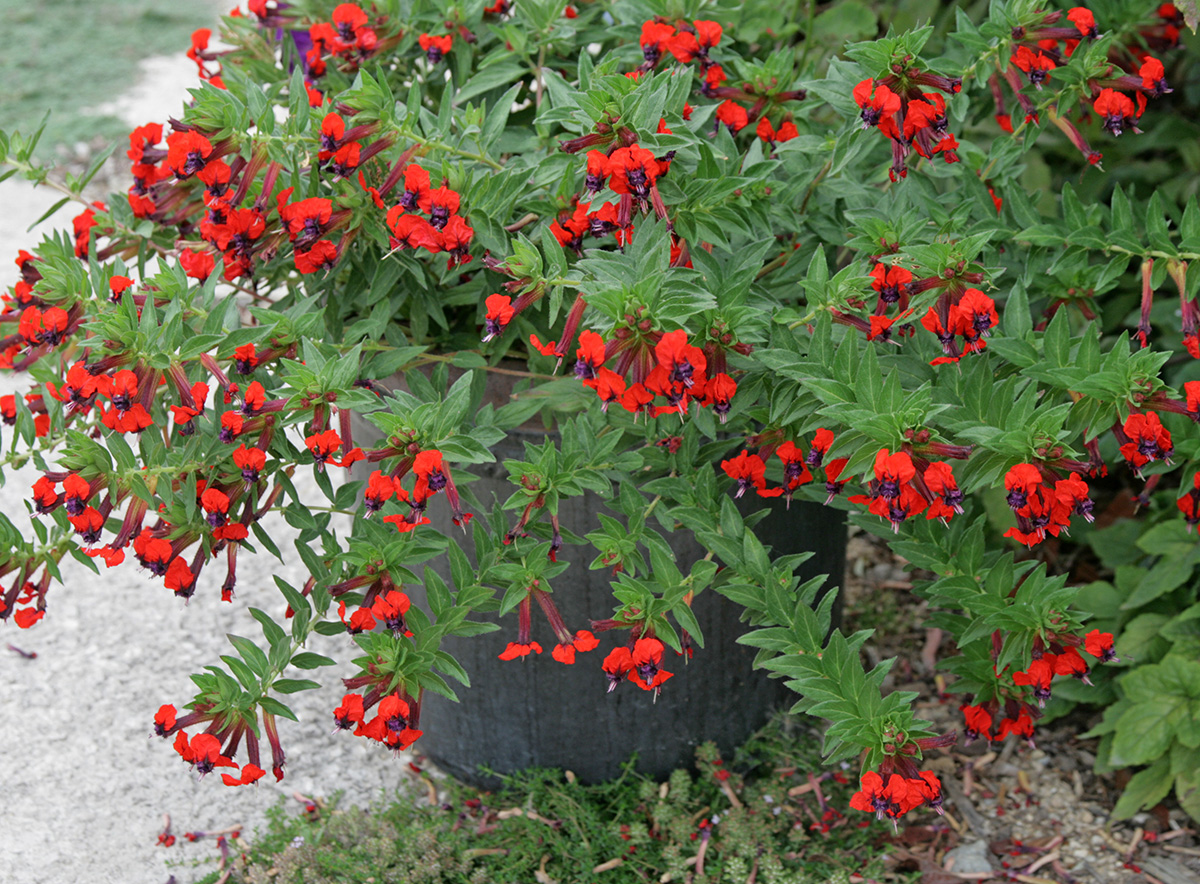The bat-faced cuphea, with its unique flowers resembling bats in flight, is an eye-catching plant loved by many gardeners. However, these plants can fall victim to infestations of tiny leafhoppers that damage foliage and stunt growth. Getting rid of leafhoppers on bat-faced cuphea requires persistence and multiple control strategies to protect your prized plants
Identifying Leafhopper Infestations
Leafhoppers are wedge-shaped green brown or yellow insects around 3-15 mm long. They earned their name from their jerky, hopping movements and tendency to quickly jump or fly away when disturbed. These sap-sucking bugs pierce plant tissues and feed on juices, leaving behind white stippling, yellowing, curling, wilting or plant stunting. Check the undersides of leaves as this is where they tend to lurk and feed. If you see leaf stippling and hopping bugs, it’s definitely leafhoppers.
Cultural and Physical Controls
Start by using preventative cultural methods and physical removal to reduce leafhopper populations
-
Prune away heavily infested stems and foliage to eliminate groups of leafhoppers.
-
Use row covers as physical barriers to exclude the insects.
-
Water plants at soil level and avoid overhead watering which attracts leafhoppers.
-
Remove weeds and debris providing leafhopper habitat.
-
Turn over soil in autumn to expose and kill overwintering leafhopper eggs.
-
Handpick and drop individual leafhoppers into soapy water to kill them.
Encourage Natural Predators
Natural predators like ladybugs, lacewings, spiders and assassin bugs will prey on leafhoppers. Plant nectar-producing flowers near your cuphea to attract these beneficial insects. You can also purchase them from garden supply centers and release them near infested plants.
Apply Organic Sprays
Leafhoppers can be difficult to control but organic sprays can help reduce their numbers:
-
Insecticidal soaps dissolve leafhopper exoskeletons leading to dehydration and death.
-
Neem oil interferes with leafhopper growth and reproduction.
-
Essential oils like peppermint, eucalyptus and thyme can deter feeding.
-
Kaolin clay coats leaves making them unpalatable to leafhoppers.
-
Horticultural oils smother leafhopper eggs and nymphs.
DIY Repellents
Homemade repellents using common household ingredients can also deter leafhoppers:
-
Garlic, onion or chili pepper sprays repel leafhoppers with strong scents.
-
Sprays made from steeped citrus peels contain d-limonene which repels insects.
-
Diluted liquid dish soap solutions disrupt leafhopper bodily functions.
-
Vegetable oil and water mixtures suffocate insects and eggs on contact.
Protect Young Plants
Leafhopper damage is most detrimental to seedlings and young cuphea plants which are more vulnerable. Take extra steps to safeguard them:
-
Cover with row covers or fine netting to form a physical barrier.
-
Use reflective mulches like aluminum foil around bases which deter insect landing.
-
Spray more frequently with organic insecticides while plants are establishing.
-
Check undersides of leaves daily and hand remove any leafhoppers found.
Be Persistent
Leafhoppers are stubborn pests requiring diligent monitoring and multiple control methods. Combine cultural practices, physical barriers, natural predators and organic sprays to reduce their numbers. Keep treating until all signs of leafhoppers are gone. With persistence, you can protect your bat-faced cupheas from these destructive insects.
Getting rid of leafhoppers organically requires an integrated approach and dedication to protecting your unique bat-faced cuphea plants. But with the right combination of cultural controls, physical barriers, biological predators and botanical sprays, you can keep leafhoppers at bay and enjoy lush, beautiful foliage. Your beloved cupheas will soon be thriving again, free of pesky leafhopper damage.

Meet the Usual Suspects: Common Pests on Bat-faced Cuphea
Tiny webs under leaves and a speckled look on foliage scream spider mites.
Blast them with water or apply neem oil. Keep humidity high to deter future invasions.
Look for bumps on stems and leaves—classic scale.
Rub them off with an alcohol swab or apply horticultural oil. Inspect new plants to prevent spread.
Creating an Inhospitable Base: Soil and Moisture Tactics
Use sterile potting mix to discourage pest invasions. Avoid overwatering; its like sending out invitations to a pest housewarming.
How to Kill Leaf Hoppers
FAQ
How do you get rid of a leafhopper infestation?
What is the best spray for leaf hoppers?
What chemical kills leafhoppers?
Is neem oil effective against leafhoppers?
What is a bat face Cuphea plant?
Native to Central America and Mexico, bat face cuphea plant (Cuphea llavea) is named for its interesting little bat-faced blooms of deep purple and bright red. Read this article for helpful informatio
How do you plant a bat-faced Cuphea?
Combine bat-faced cuphea with red or purple flowers or foliage to complement the flowers. Plant bat-faced cuphea in annual beds, along the edges of borders or paths, or in containers – including hanging baskets – where its unique flowers can be appreciated up close.
How do you care for a bat faced Cuphea?
For best results, provide plants with: Organic soil. Full sun or part shade, depending on where you live. Regular water. All-purpose fertilizer. Bat-faced cuphea is fairly low maintenance. You can perform some light tip pruning or pinching if plants become too leggy.
How do you grow a bat face Cuphea?
The easiest way to grow cuphea flowers is to purchase bedding plants at a nursery or garden center. Otherwise, start seeds indoors 10 to 12 weeks before the last hard frost in your area. Plant bat face cuphea in full sunlight and the plant will reward you with color throughout the season.
